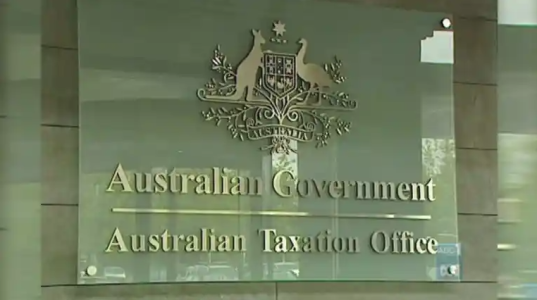'Strange glitch' accuses Australians of owing back taxes from 2008 and causes 'unnecessary distress'
By
VanessaC
- Replies 15
In a move that has left many Australians scratching their heads, a tax scheme designed to resurrect old debts has sent taxpayers on a wild goose chase, trying to locate long-lost chequebooks and payment receipts.
Many have received letters advising them of their historical debt, which may be recouped from their future tax refunds and credits.
The scheme, dubbed 'robotax', has been compared to the controversial robodebt compliance program.
This has used automated processes to assert that welfare recipients owed money to the Commonwealth.
The Australian Taxation Office (ATO) has since put the scheme under review and paused the accompanying letter campaign after admitting it had caused 'unnecessary distress'.
However, the alleged debts remain, leaving many Australians in a state of financial uncertainty.
The ATO's 'robotax' initiative has been met with widespread criticism, with many recipients of the letters expressing their frustration and confusion.
Anne Marks, a retired teacher, was sent a letter advising her of a $305 debt.
After making inquiries, she was told it dated back to 2008, prompting her to dig up old chequebook butts from that year.
The 73-year-old expressed her disbelief, stating that she should have been alerted to any discrepancy in her 2008 return in the years that followed.
Another current teacher shared that she has already been living 'hand-to-mouth' and grappling with steep mortgage payments and student loans when the debt notice from the ATO for several hundred dollars had arrived.
'I received this unexplained robotax letter and have no idea why,' the teacher shared.
The lack of detail provided by the ATO has made it difficult for taxpayers to assess the accuracy of these claims.
Many of the alleged debts date back to before the launch of the MyGov portal in 2013, leaving taxpayers questioning why the decision was made to pursue these old debts.
Furthermore, most of the debts pre-date the five-year retention period in which taxpayers are required to keep records.
The ATO has described the debts as 'on-hold', meaning it does not demand immediate repayment. The amount owed may instead be taken from any future refunds or credits.
This term generally refers to amounts owed to the ATO that were uneconomical to pursue—which could mean the debts are small, or that they are hard to retrieve.
The ATO sent out 200,000 letters to taxpayers and tax agents, advising them of these on-hold debts.
In a statement, the ATO said it was important that taxpayers had trust in the tax system and records.
'We verified that all debts exist and that all taxpayers were previously informed when the debt was originally incurred through their notice of assessment,' the ATO claimed.
'Taxpayers can check whether they have a debt on hold by calling us.'
However, this boilerplate letter campaign contradicted recommendations made by the Commonwealth ombudsman in 2009 when a similar issue emerged.
The ombudsman had advised the ATO to specify the source of the debt, if there were any interests charged, and the circumstances that caused the debt to be resurrected when communicating the debt with the taxpayers.
Many of the resurrected debts relate to the pay-as-you-go (PAYG) system, whereby the ATO requires a taxpayer to make prepayments on the anticipated tax generated by a business or investments.
Several Australians have shared that they had been told by the ATO they had PAYG debts dating back more than 15 years, despite being long-term salaried workers and their lack of knowledge of ever being part of the instalment program.
'I had no idea how many letters had been sent out and that so many people were like me and confused about their debt,' one public servant shared, referring to a debt they allegedly accrued in 2008.
'I thought my letter was a strange glitch.'
 Have you received a 'robotax' letter? Share your experiences and thoughts in the comments below.
Have you received a 'robotax' letter? Share your experiences and thoughts in the comments below.
Many have received letters advising them of their historical debt, which may be recouped from their future tax refunds and credits.
The scheme, dubbed 'robotax', has been compared to the controversial robodebt compliance program.
This has used automated processes to assert that welfare recipients owed money to the Commonwealth.
The Australian Taxation Office (ATO) has since put the scheme under review and paused the accompanying letter campaign after admitting it had caused 'unnecessary distress'.
However, the alleged debts remain, leaving many Australians in a state of financial uncertainty.
The ATO's 'robotax' initiative has been met with widespread criticism, with many recipients of the letters expressing their frustration and confusion.
Anne Marks, a retired teacher, was sent a letter advising her of a $305 debt.
After making inquiries, she was told it dated back to 2008, prompting her to dig up old chequebook butts from that year.
The 73-year-old expressed her disbelief, stating that she should have been alerted to any discrepancy in her 2008 return in the years that followed.
Another current teacher shared that she has already been living 'hand-to-mouth' and grappling with steep mortgage payments and student loans when the debt notice from the ATO for several hundred dollars had arrived.
'I received this unexplained robotax letter and have no idea why,' the teacher shared.
The lack of detail provided by the ATO has made it difficult for taxpayers to assess the accuracy of these claims.
Many of the alleged debts date back to before the launch of the MyGov portal in 2013, leaving taxpayers questioning why the decision was made to pursue these old debts.
Furthermore, most of the debts pre-date the five-year retention period in which taxpayers are required to keep records.
The ATO has described the debts as 'on-hold', meaning it does not demand immediate repayment. The amount owed may instead be taken from any future refunds or credits.
This term generally refers to amounts owed to the ATO that were uneconomical to pursue—which could mean the debts are small, or that they are hard to retrieve.
The ATO sent out 200,000 letters to taxpayers and tax agents, advising them of these on-hold debts.
In a statement, the ATO said it was important that taxpayers had trust in the tax system and records.
'We verified that all debts exist and that all taxpayers were previously informed when the debt was originally incurred through their notice of assessment,' the ATO claimed.
'Taxpayers can check whether they have a debt on hold by calling us.'
However, this boilerplate letter campaign contradicted recommendations made by the Commonwealth ombudsman in 2009 when a similar issue emerged.
The ombudsman had advised the ATO to specify the source of the debt, if there were any interests charged, and the circumstances that caused the debt to be resurrected when communicating the debt with the taxpayers.
Many of the resurrected debts relate to the pay-as-you-go (PAYG) system, whereby the ATO requires a taxpayer to make prepayments on the anticipated tax generated by a business or investments.
Several Australians have shared that they had been told by the ATO they had PAYG debts dating back more than 15 years, despite being long-term salaried workers and their lack of knowledge of ever being part of the instalment program.
'I had no idea how many letters had been sent out and that so many people were like me and confused about their debt,' one public servant shared, referring to a debt they allegedly accrued in 2008.
'I thought my letter was a strange glitch.'
Key Takeaways
- An Australian tax scheme designed to recover old debts has caused confusion and mistrust amongst citizens.
- The initiative, labelled 'robotax', has drawn comparisons to the flawed robodebt compliance program and has resulted in distressing letters advising of historical debts.
- Many taxpayers, who were advised of debts dating back more than a decade, have expressed difficulty in assessing the legitimacy of these claims due to the lack of detail provided and the historical nature of the claims.
- The ATO maintained that all debts exist and were previously communicated to the taxpayers when initially incurred.








